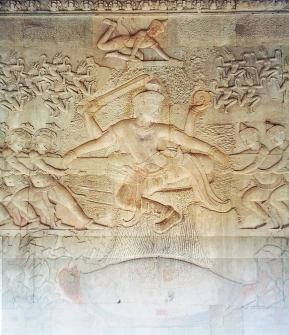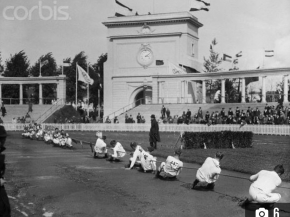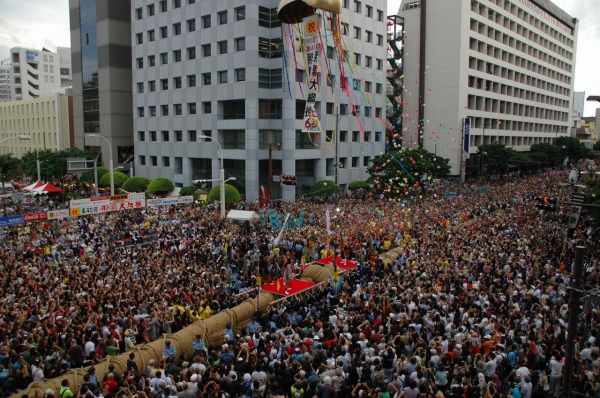Exeat: Day 158/84: Tug-of-War Day .... & Dr Mathew is certifed at York
Dr. Mathew Certified on YouTube at 1pm. So we logged on and there it all was, with graduands singing, a new Honorary Doctor renowned for her studies of the role of governments in innovation and, amongst the Department of Politics our own newly minted Dr Mathew Wills, BA, MBA, MSc, PhD, FCA
 
World record rests with 1,574 tuggers. Tug-of-War* is a competitive sport that takes place around the world and has a long and ancient history. Guinness Records says the longest tug-of-war lasted 2 hours and 41 minutes and was held between two British Companies of a British Army regiment stationed in India in 1889. To compete, two teams hold each end of a large rope and attempt to pull the other towards them over a line in order to win. Contests often take place over bodies of water or muddy areas so that the losing team suffers the indignity of falling in which is preferable to the Viking version of tug-of-war when teams competed over a pit of fire. Cries of ‘heave’ are heard around the world on a day when numerous matches take place, giving a chance to take part or cheer on this timeless team game. It was part of the Summer Olympics from 1900-1920 with Great Britain [represented by City of London Police!] and Sweden twice Gold medalists and Year Gold and USA once - there were no Olympics during WWI in 1916. Denmark, The Netherlands, France and Belgium were occasional Silver and Bronze. It is a regular event at the World Games these days with Switzerland and The Netherlands dominating the Men's and China the Women's tugs.
 
Origins of the sport. The origins of tug of war are uncertain but it was known to be practised in Cambodia [shown above], ancient Egypt, Greece, India and China. According The Notes of Feng under the name "hook pulling" was used by the military commander of the State of Chu during the Spring and Autumn period (8th to 5th centuries BC) to train warriors. During the Tang dynasty Emperor Xuanzon promoted large-scale tug of war games using ropes of up to 167 metres (548 ft) with shorter ropes attached with more than 500 people on each end of the rope. Each side also had its own team of drummers to encourage the participants. In ancient Greece the sport was called helkustinda meaning amongst others "I pull through". Helkustinda seems to have been an ordinary version of tug of war while dielkustinda had no rope with the teams holding hands when pulling, which would have increased difficulty since handgrips are more difficult to sustain than a grip of a rope. Tug of war games in ancient Greece were among the most popular games used for strength and would help build strength needed for battle in full armour. The contest of pulling on the rope originates from ancient ceremonies and rituals of which evidence is found in countries like Egypt and New Guinea... India has strong archaeological roots going back at least to the 12th century AD in the area of the State of Orissa today. The famous Sun Temple of Konark has a stone relief on the west wing of the structure clearly showing Tug of War in progress. Naha in Japan enjoys a magnificent festival.

Personal Reminiscence from 1977. It was a time of great excitement in Great Billing where we lived at that time. It was the Silver Jubilee of HM Queen Elizabeth I & II and the village grounds behind our home were the scene of a celebration. I was called upon to umpire the Tug-of-War between our village and AN Other. I thought it was a fun event but I made a grave miscalculation especially when declaring our own Great Billing Team the winners. In a quiet moment later at the Beer Tent I was assaulted by the losing team, the first strike put me on the ground and as I stood up the second blow to my cheek bone put me down again. At this juncture Avril armed with an umbrella came to my rescue chasing off an entire Tug-of-War Team unaided. My penance for poor umpiring was two magnificent black eyes but the certain knowledge that in a fight it's always best to make sure Avril's on your side.
_____________________________________________________________________
*Tug-of-War Tactics Aside from the raw muscle power needed for tug of war, it is also a technical sport. The cooperation or "rhythm" of team members play an equally important role in victory, if not more, than their physical strength. To achieve this, a person called a "driver" is used to harmonize the team's joint traction power. He moves up and down next to his team pulling on the rope, giving orders to them when to pull and when to rest (called "hanging"). If he spots the opponents trying to pull his team away, he gives a "hang" command, each member will dig into the grass with his/her boots and movement of the rope is limited. When the opponents are played out, he shouts "pull" and rhythmically waves his hat or handkerchief for his team to pull together. Slowly but surely, the other team is forced into surrender by a runaway pull. Another factor that affects the game that is little known are the players' weights. The heavier someone is, the more static friction their feet have to the ground, and if there isn't enough friction and they weigh too little, even if he/she is pulling extremely hard, the force won't go into the rope. Their feet will simply slide along the ground if their opponent(s) have better static friction with the ground. In general, as long as one team has enough static friction and can pull hard enough to overcome the static friction of their opponent(s), that team can easily win the match.
Published Date: August 27th 2020
|





